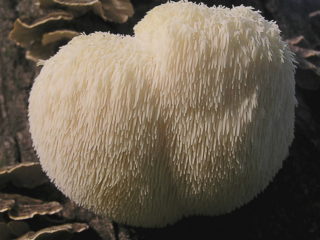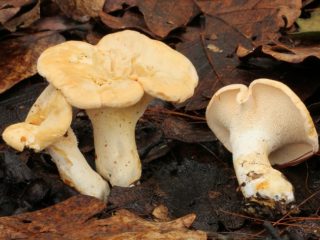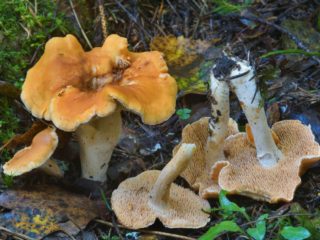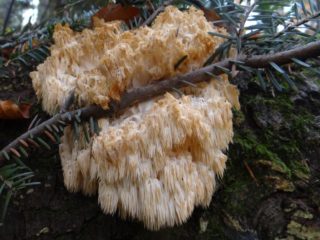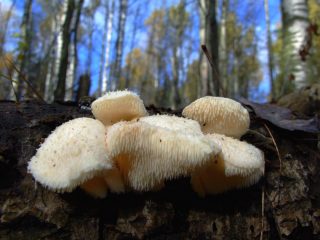Content
Hericium striped in biological reference books is designated under the Latin name Hydnum zonatum or Hydnellum concrescens. A species of the Banker family, genus Gidnellum.
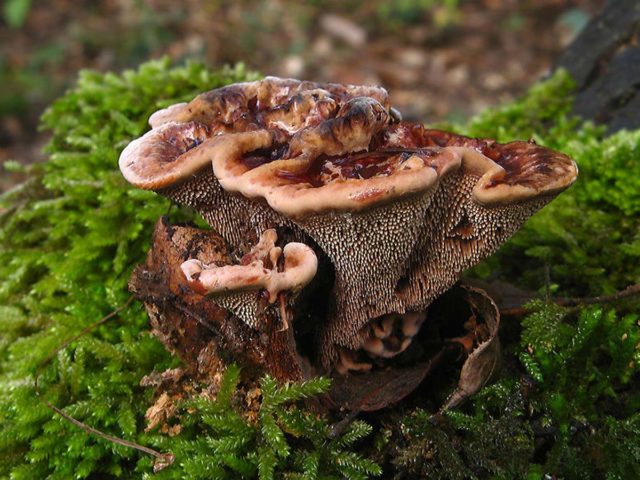
The specific name was given due to the non-monochromatic color of the fruiting body.
Description of striped hedgehogs
The striped hedgehog is a rare, endangered mushroom. Radial circles are located along the entire surface of the cap, denoting zones with different colors in tone.
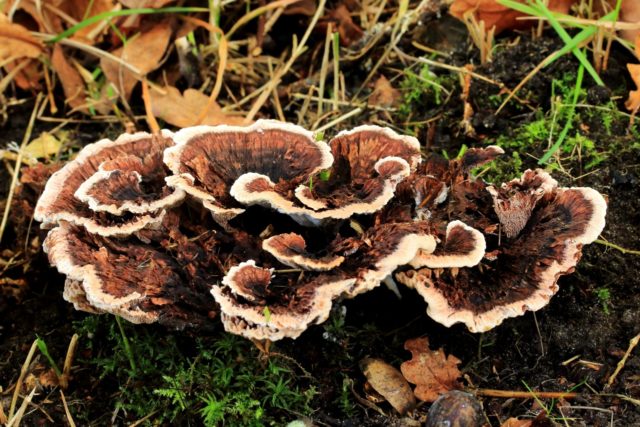
The structure of the fruiting body is hard, beige color, odorless and tasteless
Description of the hat
With a dense arrangement of mushrooms, the cap is deformed, taking the shape of a funnel with wavy edges. In single specimens, it is spread out, rounded and bumpy. The average diameter is 8-10 cm.
External characteristic:
- the surface is corrugated with a dark brown color in the center, as it approaches the edge, the tone brightens and becomes yellowish with a brown tint;
- edges with beige or white stripes, color zones separated by dark, radially spaced circles;
- the protective film is velvety, often dry;
- the hymenophore is spinous, the thorns are thick, directed downward, brown at the base, the tops are light;
- the lower part of the cap of young specimens looks gray with a dark beige tint closer to the stem, in adults it is dark brown.
The spore-bearing layer is descending, without a clear border dividing the cap and stalk.
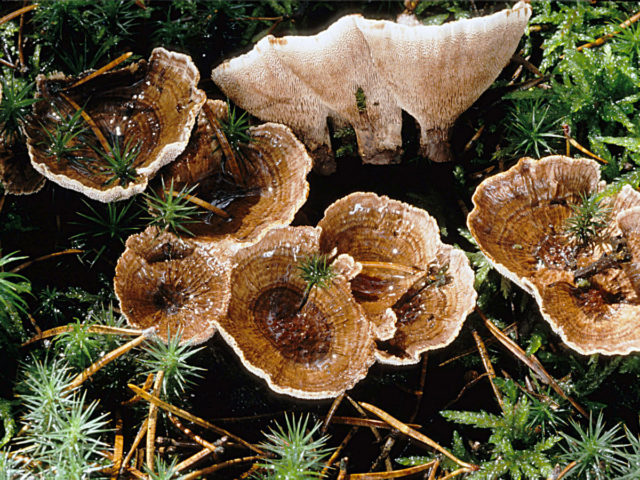
At high humidity, the cap is covered with a thin mucous coating
Leg description
Most of the stem is in the substrate, above the ground it looks like a short, thin and disproportionate upper part. The structure is rigid. The surface at the base with fragments of mycelium filaments, the color can be of all shades of drilling.
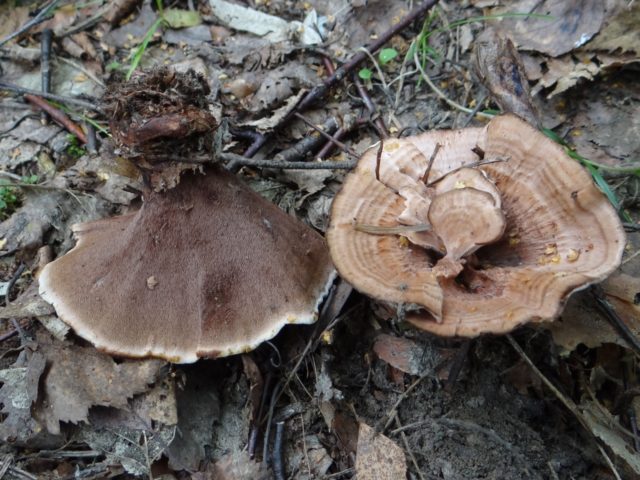
Often, before the transition to the cap, the lower part of the stem is covered with the remains of the substrate.
Where and how it grows
The main accumulation of striped hedgehog is in mixed forests with a predominance of birch. Namely, in the Far East, the European part of the Russian Federation, the Urals and Siberia. It belongs to the saprophytic species, grows on rotten wood remains among the moss. Fruiting is short-lived - from August to September. It is located singly, there are specimens growing side by side, but mainly forms dense groups. With a close arrangement, the fruit bodies grow together with the lateral part from base to top.
Is the mushroom edible or not
There is no information on the toxicity of the species. The hard, dry structure of the fruiting body does not represent nutritional value.
Doubles and their differences
Outwardly, it looks like a striped hedgehog two-year old dry-house A kind with a thinner flesh. The color is light or dark yellow. Closer to the edge, bounded by radial circles, the stripe is much darker in tone. The ends are straight or slightly wavy. The hymenophore is weakly descending. The species is inedible.
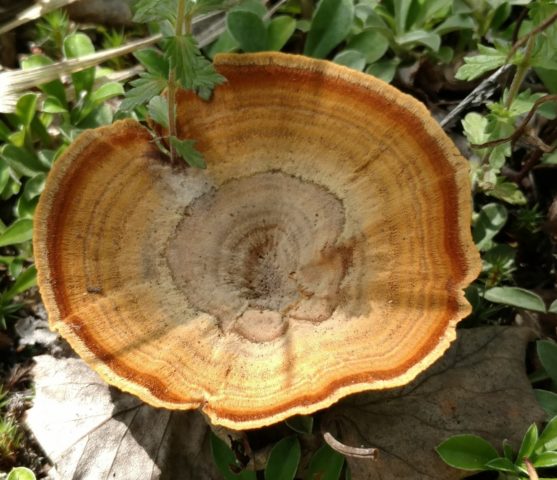
The surface is velvety with poorly defined color zones
Conclusion
Hericium striped - an endangered species. Distributed in temperate climates, fruiting is late, short-lived. The structure of the fruit body is woody, tasteless, the black man's nutritional value is not. Fruit bodies are inedible.


